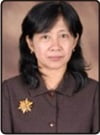The Dynamics of Keroncong Music in Indonesia, 1940’s — 2000’s
Abstract
ABSTRACT: “Keroncong” music, as a treasure of Indonesian national music, has been experiencing a long phase since the arrival of the Moorish as Portuguese slaves to Indonesia in the 16th century. In the long period, the “keroncong” music then, as other kinds of traditional music, has to face industry music, especially Western music. The power of financial capital, the superiority of technology, and the sophistication of marketing ground down traditional music. This paper tries to analyze the “keroncong” music in Indonesia that can still be maintained or popularized through various ways and by making a proper media of promotion such as through television and radio so that society are familiar to “keroncong” music. Therefore, “keroncong” artists should make innovations or changes that can attract people’s interest to “keroncong” music. They should create song lyrics that reflec the life of society or take themes that is in accordance to their period. Although there are many new “keroncong” compositions, but the new “keroncong” songs are rarely published in media. The emergence of “campursari” in the 1990s, pioneered by Manthous, brought a power of interest and became a magnet for fans and activists of “keroncong” and traditional music so that they appreciate the music and many groups of “campursari” music which is rooted from “keroncong” grew. The same effort was done by Didi Kempot and Koko Thole who has given new colour to “keroncong” music. They made efforts to spread “keroncong” music to a wide range of society and also develop the music itself.
KEY WORDS: “Keroncong” music, time of revolution, Indonesian society, “campursari” music, and innovations in traditional music.


About the Authors: Linda Sunarti, M.Hum. and Wiwin Triwinarti, M.A. are Lecturers at the Department of History, Faculty of Humanities UI (University of Indonesia), UI Campus Depok, West Java, Indonesia. Corresponding author is lindsayrani@yahoo.co.uk
How to cite this article? Sunarti, Linda & Wiwin Triwinarti. (2013). “The Dynamics of Keroncong Music in Indonesia, 1940’s — 2000’s” in TAWARIKH: International Journal for Historical Studies, Vol.5(1) October, pp.91-102. Bandung, Indonesia: ASPENSI [Asosiasi Sarjana Pendidikan Sejarah Indonesia] and UVRI [Universitas Veteran Republik Indonesia], ISSN 2085-0980.
Chronicle of the article: Accepted (August 3, 2013); Revised (September 7, 2013); and Published (October 28, 2013).
Full Text:
PDFReferences
Alfian, Magdalia. (2006). ”Seni Pertunjukan dalam Perspektif Sejarah: Keberadaan Musik Keroncong di Indonesia”. Paper presented in the National Conference in Yogyakarta, Indonesia.
Alfian, Magdalia. (2013). “Keroncong Music Reflects the Identity of Indonesia” in TAWARIKH: International Journal for Historical Studies, Vol.4(2), April, pp.171-186. Available also at: http://www.tawarikh-journal.com/files/File/03.magdalia.id.4.13.pdf
Alkatiri, Zeffry & Mathar Moehammad Kamal. (2013). “Modern Malay Rhythm Music Trend as Popular Culture in Indonesia, 1950-1960's: A Sociological Analysis” in TAWARIKH: International Journal for Historical Studies, Vol.4, No.2 [April]. Available also at: www.tawarikh-journal.com
Anggraini, Riski. (2012). “Musik Keroncong Masa Modern, 1960-2000” in http://musik-riskianggrainimusik.blogspot.com/2012/01/masa-keroncong-modern-1960-2000. html 24 april 2012 [accessed in Jakarta, Indonesia: 15 January 2013].
Article entitled ”Keroncong” in Ensiklopedia Indonesia, Jilid 3 (Han-Kol). Jakarta: Ichtiar Baru-Van Hoeve, 1982.
Article entitled “Riwayat Musik Campursari: Tradisi dan Inovasi” available in http://www.keroncong.web.id/article.php? c=campursari &page=1 [accessed in Depok, Indonesia: 5 April 2012].
Boydon, David. D. (1986). Introduction to Music. New York: Alfred A. Knopf.
Bulletin of Tjroeng. Jakarta: October 2008 — June 2012.
Dirjen [Direktur Jenderal] Kebudayaan. (1978). Himpunan Lagu-lagu Keroncong. Jakarta, Indonesia: Departemen P & K [Pendidikan dan Kebudayaan].
Dungga, J.A. & L. Manik. (1952). Musik Indonesia dan Permasalahannja. Djakarta: Balai Pustaka.
Harmunah. (1978). Musik Keroncong: Sejarah, Gaya, dan Perkembangan. Yogyakarta: Pusat Liturgi.
http://www.lestari.info/2012/01/sejarah-dan-perjalanan-musik-campursari.html [accessed in Depok, West Java: 15 April 2012].
Interview with Rahayu Supanggah, a Lecturer at the STSI (Sekolah Tinggi Seni Indonesia or College of Idonesian Art) Surakarta, in Solo, Central Java, on April 10, 2012.
Kayam, Umar. (1981). Seni, Tradisi, dan Masyarakat. Jakarta: Sinar Harapan.
Kusbini. (1981). Lagu-lagu Keroncong Indonesia. Yogyakarta: Penerbit Sosi.
Lockard, Craig A. (2004). Dance of Life: Popular Music and Politics in Souteast Asia. Honululu: University of Hawai’I Press.
News on “Opinion of a Karawitan Obsever, I Wayan Sadra” available in http://www.lestari.info/2012/01/sejarah-dan-perjalanan-musik-campursari.html [accessed in Depok, Indonesia: 5 April 2012].
Pasaribu, Amir. (1986). Analisis Musik. Jakarta: Penerbit Simpati.
Soeharto, A.H. et al. (1996). Serba-serbi Keroncong. Jakarta: Penerbit Musika.
“Statement of Waldjinah” available in http://www.lestari.info/2012/01/sejarah-dan-perjalanan-musik-campursari.html [accessed in Depok, Indonesia: 15 April 2012].
Sugiyanto, Denis. (2012). “Campursari: Riwayatmu Kini” available in http://danisgamelansolo.wordpress.com [accessed in Depok, Indonesia: 12 August 2012].
Sukanti. (2002). “Waldjinah: Proses Pembentukan dan Perkembangannya sebagai Penyanyi Keroncong dan Langgam Jawa”. Unpublished Thesis Undergraduate. Surakarta, Central Java: STSI [Sekolah Tinggi Seni Indonesia].
Wijayadi, Agus Sri & Nur Sahid. (2000). Mencari Ruang Hidup Seni Tradisi. Yogyakarta: Badan Penerbit Fakultas Seni Pertunjukan.
Wijayadi, Agus Sri & Nur Sahid. (2005). ”Menelusuri Sarana Penyebaran Musik Keroncong” in Jurnal Pengetahuan dan Pemikiran Seni, Vol.VI, No.2 [May — August].
